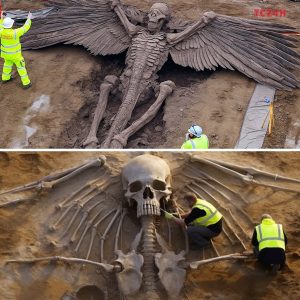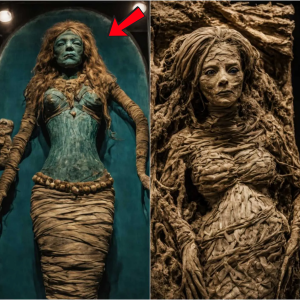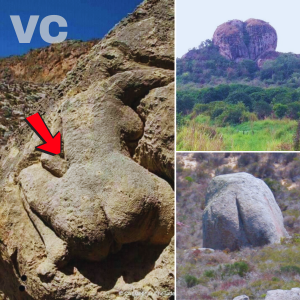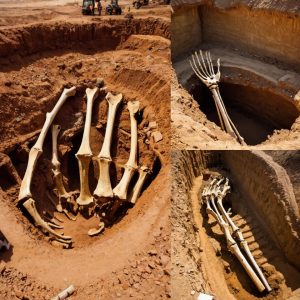Four millennia ago, the ancient Sumerian city of Girsu was home to 15,000 people, making it one of the earliest known cities. Sebastien Rey, leader of the British Museum team excavating the ancient site, believes that it was “the cradle of civilisation and the birthplace of urban society”.
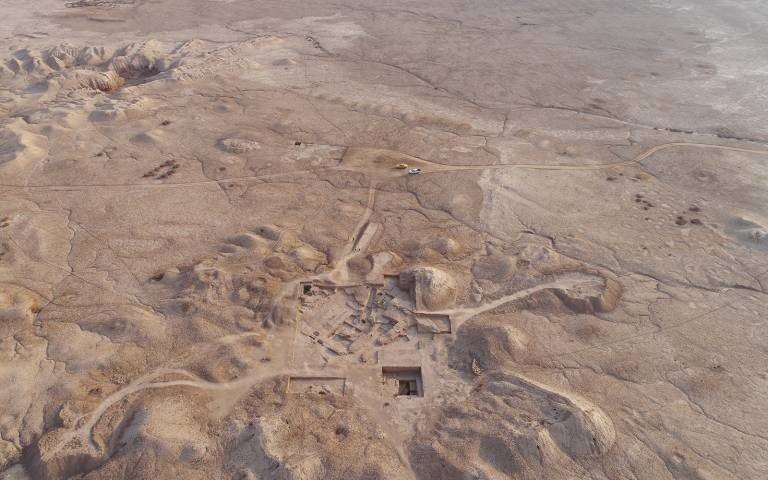 The great plain where the ancient city of Girsu once stood
The great plain where the ancient city of Girsu once stood
Rey believes that the period 4,000 years ago marks the transition from large village settlements to the birth of cities and states; and the development of cuneiform writing to record information, legends and – in the case of King Gudea – dreams. The period also marked the birth of civil order and the bureaucracy necessary to maintain it.
King Gudea’s Dream
Girsu was the principal city of the state of Lagash, which was ruled over by King Gudea for 20 years between 2144 and 2124 BC. He built the temple of Ningursi in Girsu around 4,000 years ago. The site at present-day Telloh was first excavated by the French archaeologist Ernest de Sarzec in the late 19th century. De Sarzec excavated the palace of King Gudea, found evidence of a temple dedicated to Ningirsu, and retrieved a trove of objects including statues of Gudea and thousands of inscribed clay tablets.
Gudea was a powerful ruler who established a dynasty, but he was also a man of great piety. The French excavations in the 19th century revealed a number of cuneiform tablets describing a series of dreams, in which Gudea was visited by Ningirsu the thunder god – a well-known story from Sumerian times. ‘In the dream was a man,’ the tablets record, ‘who was as huge as heaven, as huge as earth. As to his upper part he was a god … as to his lower part he was the hurricane. At his right and left there crouched a lion. He commanded me to build a temple…’ Doing so, Ningirsu told Gudea, would bring ‘immediate abundance. The great fields will grow rich for you, the levees and ditches will be full to brim for you, the water will rise to heights never reached before. Under you more oil than ever will be poured and more wool than ever will be weighed in Sumer.’
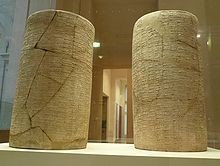 The Gudea Cylinders, dating to c.2125 BC, describe how Gudea rebuilt the temple of Ningirsu following a dream
The Gudea Cylinders, dating to c.2125 BC, describe how Gudea rebuilt the temple of Ningirsu following a dream
Interestingly, one of the statues recovered in the 19th century was of Gudea, seated with a plan on his knee. It may be that this depicted the king’s dream along with a scale of measurement corresponding to the actual layout of the temple. If so, this would be the oldest known example of an architect’s plan. The statue is now in the Louvre
Temple of Ningirsu
Even before the reign of Gudea, a temple to Ningirsu had already stood for hundreds of years in Girsu. What the French found was the site of an earlier temple, pre-dating Gudea, but they found no conclusive evidence of the later temple built by the king. The assumption was that it had either been destroyed or eroded away. However, the French team discovered another building constructed by the Babylonian Adad Nadin Akke some 1,500 years later in the Hellenistic period, around the time of the death of Alexander the Great. Here they found bricks with inscriptions in Aramaic and Greek, as well as statues of Gudea. The French concluded that the site was probably a palace or a museum where Adad, acting as ‘a curator’, had displayed relics from Gudea’s rule 2,000 years earlier.
In 2016 the British Museum team took another look at this site and discovered a mud-brick wall. Inserted into the wall was a clay cone, some eight inches in length, with a cuneiform inscription: ‘To the god Ningirsu, the hero warrior of Enlil [the supreme deity]; Gudea built the house 50 of the thunderbird, and made things function as they should.’ (‘House 50’ means temple of the 50 powers ascribed to Ningirsu.) Subsequent digging here has located 17 inscribed cones in situ within the temple walls. They appear to have been inserted randomly, with no apparent order or symmetry.
 Iraqi archaeologist Rana Zuhair conserves a cone
Iraqi archaeologist Rana Zuhair conserves a cone
Further excavation revealed the walls of the temple which were three metres thick, the outline of the inner sanctum, the altar and, in front of it, the podium where the statue of Ningirsu would once have stood. (The statue has not been found.)
The oldest bridge in the world?
Other major discoveries at the site include a brick structure dating back to the third millenium BC. One theory is that it was a bridge over an ancient irrigation canal – the earliest-known bridge in the world. Excavating beneath it, the team uncovered a foundation brick inscribed with the name of Ningirsu.
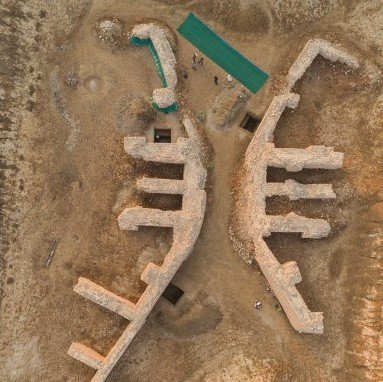 Aerial view of the bridge at Girsu
Aerial view of the bridge at Girsu
King Gudea was to be one of the last independent rulers of Girsu. His death is unrecorded, but we know that one of his sons succeeded him. We also know from texts at that time that the city’s main irrigation canal was beginning to silt up, imperilling the food supply, and conscripts were sent in a futile attempt to clean it. At the same time, political turmoil enveloped the region. Around 1800 BC the city was finally abandoned and it would be another 1,500 years before Adad Nadin Akke arrived to build his memorial to the great king Gudea. If that is what it was?
Museum Pieces
The British Museum in London has a large and impressive collection of finds from Iraq, formerly known as Mesopotamia. One unusual example is a clay tablet, found in Girsu and dating from around 2,350 BC, which comprises an account written in Cuneiform of barley rations issued monthly to adults and children.
 List of barley rations on a clay tablet from Girsu. British Museum, London
List of barley rations on a clay tablet from Girsu. British Museum, London
More recent finds during the current excavations have included an exceptional white cylinder seal depicting the thunder god Ningirsu with a horned tiara, an amulet of the Sumerian demon Pazuzu and a terracotta plaque of a Sumerian goddess. The most important finds are now sent to the Iraq Museum in Baghdad, others to the museum in the nearest city of Nasiriyah.
